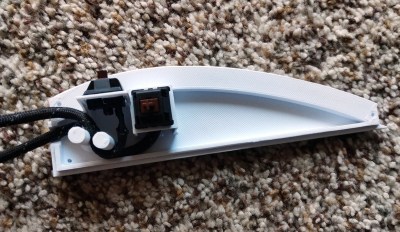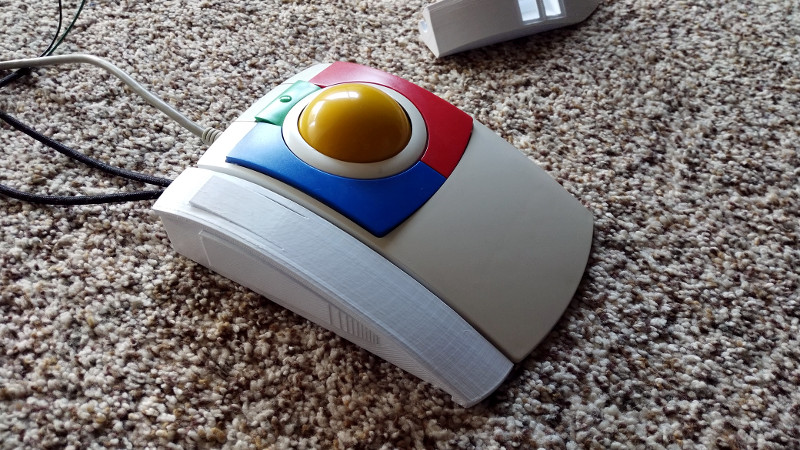The question of whether to use a mouse versus a trackball is something of a Holy War on the level of Vi versus Emacs. We at Hackaday want no part of such things, use whatever you want, and leave us out of it. But we will go as far as to say that Team Trackball seems to take things mighty seriously. We’ve never met a casual trackball user: if they’ve got a trackball on their desk then get ready to hear all about it.
 With that in mind, the lengths [LayeredDesigns] went to just to add a couple extra buttons to his CST trackball make a bit more sense. Obviously enamored with this particular piece of pointing technology, he designed a 3D printed “sidecar” that you can mount to the left side of the stock trackball. Matching the shape of the original case pretty closely, this add-on module currently hosts a pair of MX mechanical keys, but the plans don’t stop there.
With that in mind, the lengths [LayeredDesigns] went to just to add a couple extra buttons to his CST trackball make a bit more sense. Obviously enamored with this particular piece of pointing technology, he designed a 3D printed “sidecar” that you can mount to the left side of the stock trackball. Matching the shape of the original case pretty closely, this add-on module currently hosts a pair of MX mechanical keys, but the plans don’t stop there.
[LayeredDesigns] mentions that all the free room inside the shell for this two-button modification has got him thinking of what else he could fit in there. The logical choice is a Teensy emulating a USB HID device, which could allow for all sorts of cool programmable input possibilities. One potential feature he mentioned was adding a scroll wheel, which the Teensy could easily interface with and present to the operating system.
We’ve seen our fair share of 3D printed keyboards and keyboard modifications, but we can’t say the same about the legendary trackball. Ones made of cardboard, sure. Pulled out of a military installation and hacked to add USB? You bet. This project is just more evidence of what’s possible with a 3D printer, a caliper, and some patience.
[via /r/functionalprint]















I want to see Microsoft bring back their Trackball Optical 1.0. But this time with silicon carbide balls instead of the steel ones which if you didn’t wash your hands before using it, and pop the ball out and wipe it and the steel support balls each session, would get flat spots. Then the plastic ball would drag on its socket.
For a while some people had a thriving business fixing those MS trackballs, somehow popping out the steel balls then carefully super gluing in silicon carbide ones.
If MS won’t bring it back, some company needs to clone it, and make a wireless version too. A Logitech M570 is nice but a bit smaller than the MSTO1.0 and it has the two extra buttons fore/aft to the left of the left button instead of one to the left of left and one right of right.
How did they replicate the curve of the Trackball casing in the 3D model? I mean, I don’t have any problem to replicate parts with straight edges with a caliper in hand, but I have problems with curves
From the top picture they didn’t get it quite right. Anyway they may have used a radius gauge, French curve or traced the original on paper and made a few measurements from that.
I’ve not done it, but I see people using photographs from which they simply trace the curve into their modelling program.
I’ve done it, and I believe that’s exactly how it was done here.
Getting a perfect match is hard, but it gets you darn close and that’s usually close enough.
Personally, I’d like to see someone add a thumb trackball to a mouse. It would be fantastic for working with 3d modeling; move the mouse to pan and the trackball to rotate.